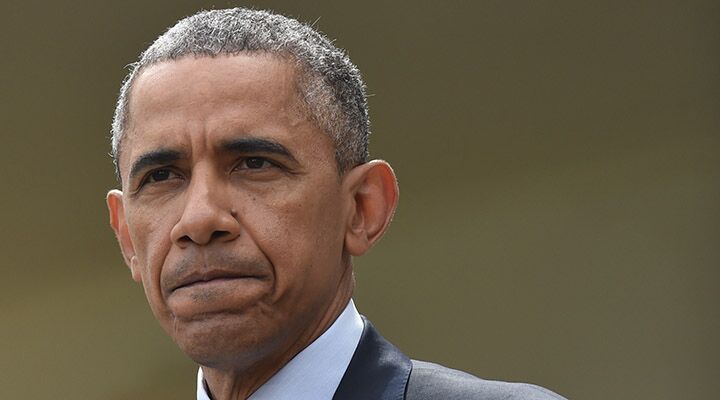
Is Iran a State Sponsor of Terrorism?
Just because the United States is negotiating a nuclear deal with Iran, it doesn’t mean that Iran is no longer a state sponsor of terrorism. That’s because it still is a state sponsor of terrorism, as the State Department’s annual “Country Reports on Terrorism 2014” affirmed.
The reports, released June 19, revealed that, in a world where terrorist attacks increased 35 percent between 2013 and 2014, Iran was the chief state sponsor of terror.
“Designated as a state sponsor of terrorism in 1984, Iran continued its terrorist-related activity in 2014, including support for Palestinian terrorist groups in Gaza, Lebanese Hezbollah and various groups in Iraq and throughout the Middle East,” the reports said.
According to the reports, Iran’s support for Syrian President Bashar Assad’s regime is the main factor that has prolonged the Syrian civil war and worsened the human rights and refugee crisis in the nation. One way Iran has supported Assad is through its mobilization of Iraqi Shia and Afghan fighters. Iran also supports Assad by providing his regime with money and weapons. Last year, some of those weapons were flown to Syria through Iraqi airspace in violation of United Nations Security Council Resolutions, the report says.
In a press briefing just prior to the reports’ release, the State Department coordinator for counterterrorism Tina Kaidanow indicated that Iran was one of the “serious threats”—like the Islamic State and al Qaeda—“that confronted the United States and its allies” in 2014.
Predictably though, Kaidanow emphasized that the geopolitical matters regarding Iran’s terror ties and the nuclear negotiations are two separate issues.
In other words, the negotiators know what they are doing. Iran’s terror ties will not affect the nuclear negotiations, and the nuclear negotiations will not affect Iran’s terror ties, or at least, the Obama administration’s view of Iran’s terror ties.
The problem is, the negotiations have in fact affected the Obama administration’s view of Iran’s taut ties to terror.
Back in February, the Office of the Director of National Intelligence (odni) drew a lot of flak when it uncharacteristically omitted Iran and its proxy Hezbollah from the “terrorism” section of its “Statement for the Record Worldwide Threat Assessment of the U.S. Intelligence Community” for 2014. That specific “terrorism” section was part of the report since James Clapper was appointed director of national intelligence in 2010. The section prominently featured Iran year after year—until the February release of the assessment report for 2014.
The odni report even made uncharacteristically positive comments about Iran. It mentioned how Iraq’s military, Peshmerga fighters and Shiite militants—“bolstered by air and artillery strikes, weapons and advice from the United States, Arab and Western allies, and Iran—have prevented [the Islamic State] from gaining large swaths of additional territory” (emphasis added).
Hezbollah, a well-known terrorist entity, was mentioned only as a victim of the Islamic State and al Qaeda’s al-Nusra Front.
Observers naturally connected the Obama administration’s changing view of Iran to the ongoing nuclear talks, specifically, the administration’s desperation for a nuclear deal with Iran.
Israeli think tank Meir Amit Intelligence and Terrorism Information Center said that the weakening of Iran’s threat assessment “results from a combination of diplomatic interests (the United States’ talks with Iran about a nuclear deal) with the idea that Iran could assist in the battle against the Islamic State in Syria and Iraq and maybe even in the battle against jihadist terrorism in other countries.”
Council of Foreign Relations member Max Abrahms observed: “I think that we are looking at a quid pro quo, where Iran helps us with counterterrorism, and we facilitate their nuclear ambitions and cut down on our labeling of them as terrorists.”
When a delegation of seven senators quizzed Clapper about how his “annual assessment contains no meaningful reference to the chaos that Iran manufactures through its support for terrorist groups and proxy organizations,” Clapper acknowledged in a letter dated June 3 that Iran was indeed a threat.
But he admitted,
A specific reference to the terrorist threat from Iran and Hezbollah—which was not included in any of the drafts of the testimony—would have been appropriate for the 2015 assessment, but the lack of its inclusion is in no way a change in the [Intelligence Community’s] assessment.
An anonymous congressional source interviewed by the Washington Free Beacon summarized the concerns of some observers:
Whether you’re talking about the U.S. Intelligence Community’s annual Worldwide Threats assessment, the Pentagon’s ever shrinking annual report on Iran’s military power, or official hints that the pro-terror Iranian regime could somehow be an ally against terrorism in the Middle East, the Obama administration seems eager to downplay the dangers posed by Iran as negotiators close in on a comprehensive nuclear agreement.
The odni is the principal administrator of the 17-member U.S. intelligence community, which includes the State Department, the Defense Intelligence Agency, the Department of Homeland Security, the National Security Agency, the Central Intelligence Agency and the Federal Bureau of Investigation.
What could be the reason for the subtle differences between the odni’s assessment of Iran and the State Department’s?
The Obama administration may acknowledge how dangerous Iran is, but its actions and concessions toward Iran—particularly with regard to a nuclear deal with Tehran—appear to indicate otherwise.
The United States’ view of Iran does not change how dangerous the country is. In reality, it makes Iran even more dangerous.
